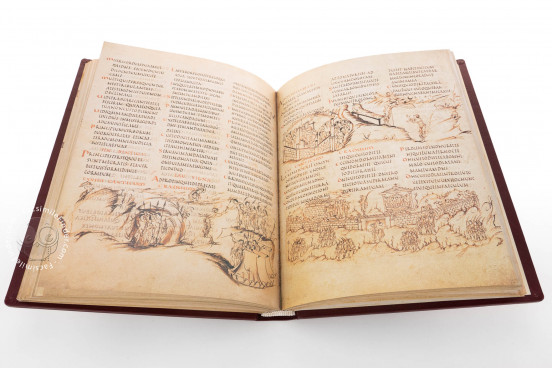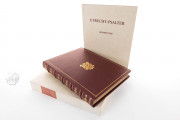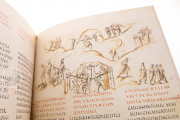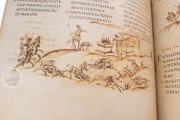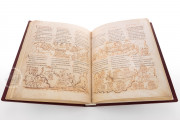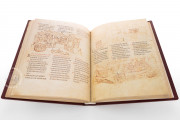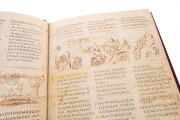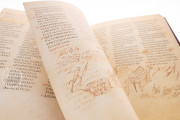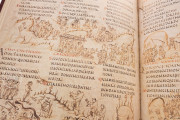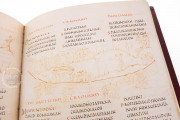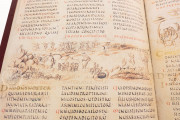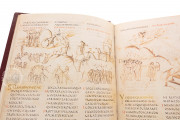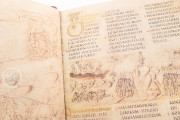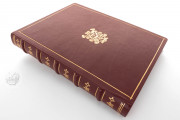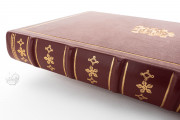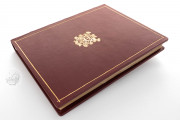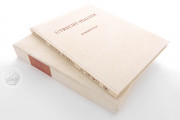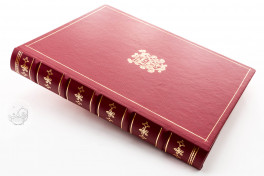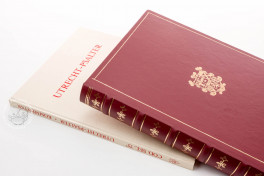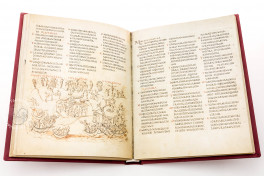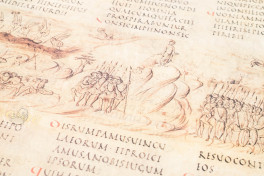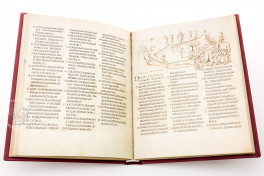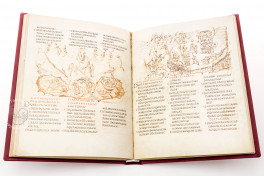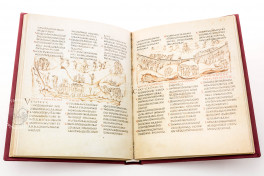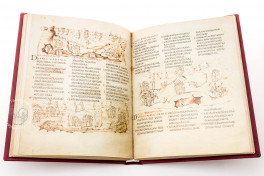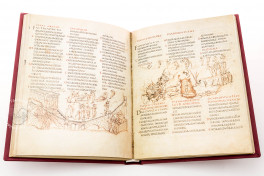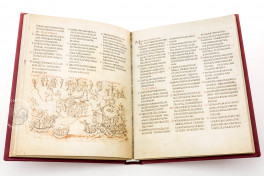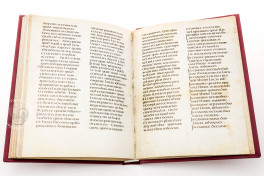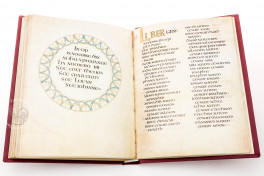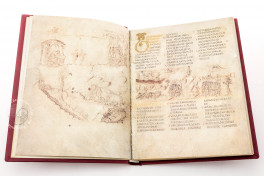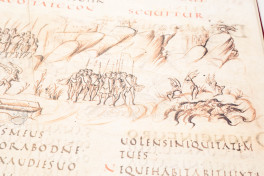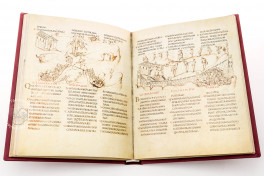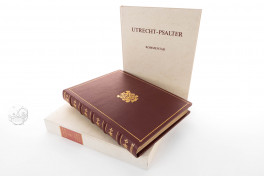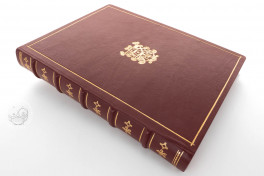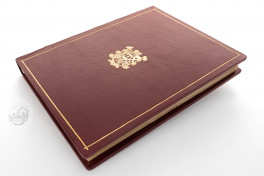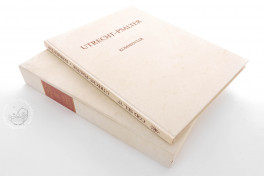The Utrecht Psalter is a masterpiece of pictorial invention. Probably made in the 820s at the Benedictine monastery of Saint Peter at Hautvillers in northern France, the manuscript is a Christian psalter, a book comprising the biblical psalms and additional texts. With miniatures executed in line drawings on bare parchment, it marks a remarkable achievement of Carolingian art. Each of the manuscript's 166 texts is introduced by an impressionistic drawing that illustrates the following text.
The psalter may have been made for Ebbo, Archbishop of Reims (d. 851), although there is no firm evidence of his patronage. It is bound together with twelve leaves from a handsome early eighth-century Gospel book made at Monkwearmouth-Jarrow in the north of England.
Illustrating Poetry
Most of the Carolingian book's texts are biblical poems—many prayers for help or meditations on suffering—devoid of narrative development. Nevertheless, the creators of the manuscript visualized the content of individual verses as episodes involving humans, animals, angels, and demons, as well as architecture and elements of landscape—hillocks, rocks, lakes, plants, and clouds.
Vignettes in a Continuous Landscape
Each drawing of the Utrecht Psalter gathers episodic vignettes into a continuous landscape, creating the impression of many events happening simultaneously in proximity. Landscape features help to group the many figures into separate scenes that illustrate a verse, a phrase, or a single word of the text.
The vignettes often visualize the abstract concepts expressed in the psalms in terms of human interactions. For example, the half-verse "they have sharpened their tongues like swords" of Psalm 63 is pictured as two men sharpening swords, one against a large whetstone being turned by an assistant and the other doing his sharpening on a workbench (fol. 35v).
Impressionistic Drawing
The drawings, which range from very faint to bold, were probably made by six artists. All are characterized by a degree of apparent spontaneity in the rendition of fluttering drapery, exaggerated hand gestures, and impressionistic rendering of landscapes and clouds.
Scripts of Late Antiquity
The psalter's text is written in three columns. The writing is probably the work of one or two scribes. The main text is written in Rustic Capitals, the script used for writing most literary texts in the late Roman imperial period. The use of this script must have been in conscious emulation of earlier manuscripts. Headings (in red) and the first line—sometimes more than one line—of each psalm (in the brown ink of the main text or gold) are written in Uncial, which—like the Rustic Capitals of the main text—is a script found in late antique manuscripts.
From Hautvillers to Canterbury to Utrecht
The Utrecht Psalter was at Christ Church, Canterbury by around 1000, where its drawings inspired three "copies," including the Great Canterbury Psalter of around 1200. The antiquarian Robert Cotton (1571-1631), who owned the psalter by around 1620, had the psalter bound together with the fragments of the earlier Gospel book.
Thomas Howard (1585-1646), Earl of Arundel, borrowed the manuscript from Cotton in 1630 and apparently never returned it. The manuscript entered the collection of the Universiteitblibliotheek Utrecht in 1716, the gift of Willem de Ridder (d. 1716). The Utrecht Psalter was named to the UNESCO Memory of the World Registry for Documentary Heritage in 2015.
We have 3 facsimiles of the manuscript "Utrecht Psalter":
- Illustrations of the Utrecht Psalter facsimile edition published by Princeton University Press, 1932
- Utrecht-Psalter (Deluxe Edition) facsimile edition published by Akademische Druck- u. Verlagsanstalt (ADEVA), 1982
- Utrecht-Psalter (Faux-Leather Edition) facsimile edition published by Akademische Druck- u. Verlagsanstalt (ADEVA), 1982

